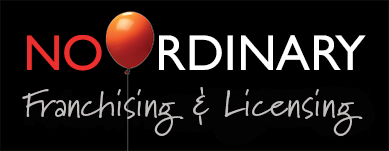I met a business owner yesterday who told me her sales doubled during the GFC. I was impressed. What was her secret? She had acted as if it were “Recession? No recession?” and resisted the urge to cut back on marketing. She had explored new market niches and technologies. All of that had been successful, but she’d done something else that had given the business by far its biggest boost. She had exploited the much-overlooked – yet hugely effective – 4 R’s of relationship marketing.
If there’s one important learning for marketers that has come out of the GFC, it’s this. That the advertising and promotion methods that many businesses formerly relied on to bring in new business just aren’t working any more.
In frustration, many owners are abandoning the old methods and taking on the new – web marketing and, more recently, ecommerce and social media marketing. Of course, this can be highly successful, but many businesses have found that by neglecting their traditional marketing media and overlooking their existing customer base, they have completely missed one potential solution to their problem.
In most mature businesses – and even relatively new ones – the greatest proportion of sales comes not from new customers, but from repeat and referral business from existing customers. These are customers who have tried your product or service, liked it, and are keen to keep buying it.
The problem is that most business owners, even those who are savvy marketers, consider these customers to be a captive market, and spend most of their marketing budget trying to attract new customers. They don’t realise that if you like a product or service, you’re not only likely to keep buying it, but you may tell your friends and family about it, too. And because of the power of word-of-mouth, you’re more likely to buy a product or service for the first time if it has been referred or recommended to you by someone you know, or if you’re aware it is used by someone you know.
Following this logic, what do you think would be harder and more expensive:
- Marketing to your existing customers to try to get them to buy more of your product or service, which they already like, and to recommend the product or service to people they know, or
- Marketing to people who probably don’t know your product or service, and may not know people who already use your product or service?
Put like this, the answer is obvious. But in the real world, what actually happens is that business owners and marketers spend most of their money on 2, the harder and more expensive way of getting people to buy from you. In fact, it is a marketing industry rule of thumb that it is ten times harder and more expensive to get a new customer than to keep and upsell an existing customer.
Keeping and upselling an existing customer is all about relationship marketing, which brings us to the 4 R’s we talked about earlier. These are:
The 1st R: Relate
The key difference between keeping a customer and getting a new customer is that you already have a relationship with your existing customer, whether you or the customer appreciate that or not. Your customer has paid for your product or service, and some of the money has ended up in your pocket (or at least, in your business account). A transaction has taken place. That constitutes a relationship.
The smartest businesses make the most of that relationship by obtaining information about the customer if they can. There are all sorts of ways of obtaining that information, but of course you need to obtain the customer’s permission to do so. That’s why relationship marketing is also called permission marketing. The smartest businesses then take a softly-softly approach to build on their relationship with the customer by offering things that may enhance the value of the product or service the customer has already purchased from you – useful information, tips, enhancements, offers, feedback and surveys, customer forums, clubs, surveys, you name it.
The 2nd R: Repeat
Part of building a relationship with the customer and enhancing the value of the product or service the customer has bought is naturally to encourage repeat purchase.
The 3rd R: Rehash
When you have established a relationship with a repeat customer, you also have an opportunity to rehash the nature of the relationship by encouraging the customer to upgrade the product or service, or try other products or services (cross-selling).
The 4th R: Referrals
This is where you provide additional means and incentives for the customer to refer your product or service to people he or she knows.
Sounds straightforward, doesn’t it? But you’d be surprised at how many businesses don’t ever talk to their customers, let alone take advantage of these opportunities, even though there are more ways today than ever of communicat-ing with customers – through the web, email, blogs and texts as well as all the traditional ways such as direct mail and newsletters.
My name is Robin La Pere of No Ordinary Consultants and I have a marketing pedigree stretching back 30 years.
I have personal experience of helping businesses and organisations to thrive no matter how hard times are, and I would be delighted to talk with you about optimising your business's sales and marketing.
Relevant Articles
Free eBook
Want your website to rank in the search engine Top 5? Who doesn’t? So what is the secret of SEO? As far back as 1996, Bill Gates coined the term “content is king” and, as usual, he was right on the money. But is Bill’s advice still relevant in a changing world? In the age of social media and mobile technology, what does it take to drive more traffic to your website?
In our new e-book The One Way to Get Your Website to the Top of the Search Engine Rankings without Spending a Single Cent on Advertising
you'll find out:
- Why Content is still king but not all Content is created equal
- 10 ways to use Content to generate more web traffic, brand awareness and sales
- How to make your Content 10x more powerful and compelling
Download your free copy now.




